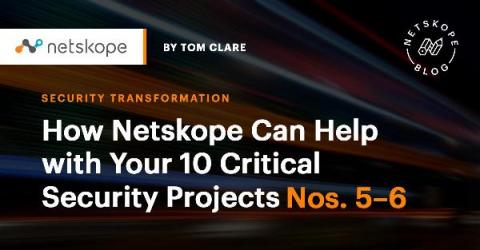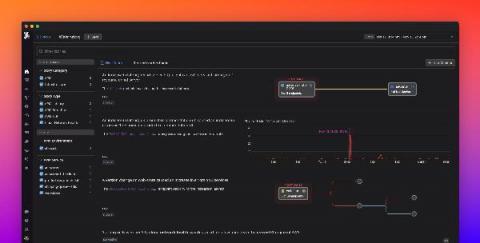Security | Threat Detection | Cyberattacks | DevSecOps | Compliance
Latest News
IoT Cybersecurity Act successfully signed into law
The IoT Cybersecurity Act, which aims to reduce the supply chain risk to the federal government arising from vulnerable IoT devices, was recently passed into law, and its effects are expected to carry over into private enterprise. Critics felt the law was long overdue: as found in the Nokia Threat Intelligence Report 2020, IoT devices are now responsible for 32.72% of all infections observed in mobile networks, representing an increase of 16.55% since 2019 alone.
How Netskope Can Help with Your 10 Critical Security Project - Nos. 5-6
The annual list of top security projects from Gartner provides key insights on where security leaders should focus their limited time and resources to be the most effective at protecting their data, users, and infrastructure. Netskope provides value for each of the top 10 recommended security projects for this year and next, including many critical capabilities. This blog series will highlight each Gartner recommendation and how Netskope specifically can help.
Five Cybersecurity Priorities to focus on in 2021
2020 will go down in history as a year of surprises. The Covid-19 pandemic resulted in challenges to health, wealth, business, and cybersecurity. The early part of the year saw a rapid movement out of the office, introducing a sudden need to support home working. According to Gartner, 88% of companies sent their workforce home to work during the peak of the pandemic. This remote work environment is continuing for many organizations in 2021. In 2020, businesses were forced to adapt fast.
What is the cost of poor software quality in the U.S.?
The total cost of poor software quality in the U.S. is estimated at $2.08 trillion. Learn what contributes to the cost and how security can help minimize errors. Do it right the first time. That long-standing cliché is based on the premise that it almost always costs more to fix something built poorly than it does to build it correctly.
5 Reasons Every Company Needs to Be Ready for a Compliance Audit in 2021
In many ways, 2020 was a year of reckoning for data privacy on the internet. After more than a decade of enthusiastically embracing a “freemium” model in which consumers traded copious amounts of personal data for access to digital platforms, many are adopting a rapid about-face. Now, privacy is essential, and stakeholders are taking notice. To date, it’s clear that many companies see this as an obstacle, not an opportunity.
Automated root cause analysis with Watchdog RCA
Since 2018, Watchdog has provided automatic, machine learning-based anomaly detection to notify you of performance issues in your applications. Earlier this year, Watchdog started grouping APM anomalies across your services, allowing you to better understand the scope of the issue.
What is a software-defined perimeter and how does SDP work?
A software defined perimeter (SDP) establishes virtual boundaries around Internet-connected assets and user activity through an integrated security architecture approach. SDP works regardless of whether assets reside on-premises or in the cloud, or whether users are on-site or working remote. Rather than relying on hardware like firewalls or VPNs at the network boundary, SDP leverages software to prevent any access to or even visibility into resources within the virtual perimeter by default.
Calm in the COVID storm: AT&T Cybersecurity
We’ve been busy at AT&T Cybersecurity during the pandemic. Turns out we could help out our network customers in so many ways. Here are some examples.
SolarWinds Orion API LFI
Supplementing the SolarWinds Security Bulletin released in mid-December 2020, detailing a suspected nation-state threat actor introducing a backdoor into SolarWinds Orion versions 2019.4 HF5, 2020.2 and 2020.2 HF1, this bulletin provides an update based on recent observations in late December 2020 and early January 2021.









